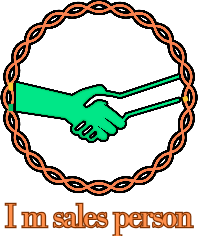Be a fb marketing expert
- Catagory : Article
- Author : Admin
Facebook Marketing
Facebook marketing has become one of the most powerful tools for businesses to reach and engage with their target audiences. With over 2.9 billion monthly active users, Facebook provides a vast platform for marketing. This article provides a detailed, step-by-step approach to Facebook marketing, helping businesses build a solid online presence and maximize their advertising efforts.
Step 1: Set Up a Facebook Business Page
Before starting with Facebook marketing, you need a dedicated business page. Here’s how to set it up:
- Create a Business Account:
- If you haven’t done so already, create a business account on Facebook. This is separate from your personal Facebook profile.
- Complete Your Profile:
- Profile Picture & Cover Photo: Choose high-quality images that reflect your brand. Your logo is usually the best option for the profile picture.
- Business Information: Fill out all the required business details like your business name, contact information, website link, and business hours.
- Call-to-Action Button: Add a CTA (e.g., Contact Us, Shop Now, Book Now) to make it easier for users to interact with your business.
Step 2: Define Your Target Audience
Understanding who you want to reach is crucial. Facebook provides powerful targeting tools to help you reach the right audience:
- Demographics: Age, gender, education level, job titles.
- Location: Target people based on specific locations (city, country, or radius around a certain point).
- Interests: Target users who show interest in specific hobbies, sports, activities, etc.
- Behavioral Data: Facebook allows you to target based on behaviors like purchasing habits, device usage, and more.
- Custom Audiences: You can upload a list of current customers, website visitors, or app users to retarget them with specific ads.
Step 3: Create Engaging Content
Content is king on Facebook. Your posts should be engaging, informative, and aligned with your business goals.
Types of Content:
- Images & Videos: These are the most engaging forms of content. Use high-quality visuals that reflect your brand message.
- Live Videos: Facebook Live is an effective tool for real-time interaction.
- Text Posts: Short and punchy text posts can capture attention quickly.
- Links to Articles or Blogs: Share valuable articles or blogs to drive traffic to your website.
Consistency is Key:
- Maintain a regular posting schedule. Use tools like Facebook’s scheduling feature or third-party apps like Hootsuite to plan posts in advance.
Engage with Your Audience:
- Respond to comments, messages, and engage in meaningful conversations. Show your audience that you value their interaction.
Step 4: Leverage Facebook Ads
Facebook ads allow you to reach a broader audience and track performance. Follow these steps to create effective ads:
Choose Your Campaign Objective:
- Facebook provides various campaign objectives like Brand Awareness, Traffic, Engagement, Lead Generation, and Conversions.
Define Your Audience:
- Use Facebook’s powerful targeting options to narrow down your audience. You can target based on location, interests, demographics, and behaviors.
Set Your Budget:
- Daily Budget: The maximum amount you are willing to spend per day.
- Lifetime Budget: The maximum amount you want to spend over the lifetime of the campaign.
Create the Ad:
- Choose the ad format (single image, carousel, slideshow, video, etc.) and design your ad accordingly. Ensure the visuals are eye-catching, and the copy is compelling.
Track Performance:
- Monitor your ad performance using Facebook Ads Manager. This includes tracking metrics like reach, engagement, clicks, and conversions. Adjust your ad strategy as needed.
Step 5: Analyze and Optimize
To get the best results from Facebook marketing, constantly monitor and improve your efforts.
Use Facebook Insights:
- Facebook provides detailed analytics for your business page, such as audience demographics, engagement metrics, and post reach.
Track Metrics for Ads:
- Keep track of the following key metrics for Facebook ads:
- Click-Through Rate (CTR): Measures the percentage of people who clicked on your ad.
- Conversion Rate: The percentage of users who completed an action after clicking the ad (e.g., purchased a product).
- Cost per Click (CPC) and Cost per Acquisition (CPA): Helps evaluate ad performance.
- Keep track of the following key metrics for Facebook ads:
A/B Testing:
- Run A/B tests to compare different ad creatives, headlines, or targeting strategies. This will help you identify what works best for your audience.
Refine Your Strategy:
- Based on insights and test results, continually refine your approach. If certain ads are performing better, allocate more budget to them. Adjust your content and targeting to improve engagement and conversions.
Step 6: Utilize Facebook Groups and Community Engagement
Facebook Groups can be a great way to build a loyal community and engage with your audience.
- Create Your Own Group:
- Create a Facebook group related to your business or niche. Use it to foster discussions, share exclusive content, and engage directly with your audience.
- Join Relevant Groups:
- Participate in other groups where your target audience is active. Avoid spamming or overly promoting your products; instead, offer valuable insights and contribute meaningfully to discussions.
Step 7: Monitor Trends and Stay Updated
Facebook continuously updates its algorithm and introduces new features. Stay on top of these changes to adjust your strategy accordingly.
- Follow Facebook’s Official Blog:
- Keep up with updates, new features, and best practices by following the official Facebook business blog.
- Experiment with New Features:
- Facebook is constantly rolling out new features like Reels, Shops, and more. Experiment with these to stay ahead of the competition and improve your marketing strategy.
Conclusion
Facebook marketing can be a game-changer for businesses of all sizes. By following these steps—setting up a professional business page, defining your audience, creating engaging content, leveraging Facebook ads, analyzing your results, and staying updated—you can build a successful marketing strategy that grows your online presence and drives results. Always remember that consistency and continuous optimization are key to long-term success on Facebook.
